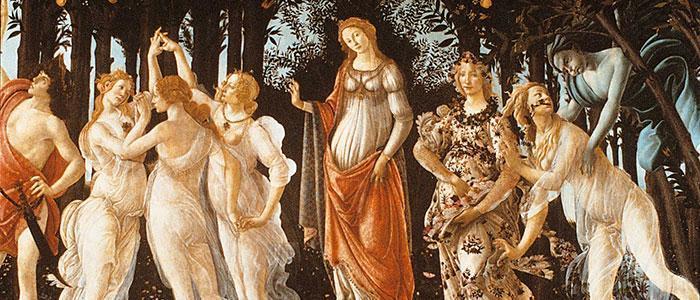
SUMMARY
Starting dates: every week, except for complete beginners
Duration: 1 or 2 weeks
Levels: from 2° ability level
Lessons: 12 in 2 weeks
Dates: click here
Prices: click here
More information: click here
To enroll: click here
For those who are fascinated by the beauty of Italian monuments and are not satisfied with only a basic understanding of them. Our History of Italian Art course will allow you to learn in depth about the history and social context in which these masterpieces were designed and executed.
The course is designed to show, by means of slides and guided visits, the development of art in Italy in relation to the rest of Europe and offers you an introduction to the most important artistic styles (Romanesque, Gothic, Renaissance, Baroque). You will become acquainted with the most important works of artists such as Botticelli, Leonardo, Raphael and Michelangelo while learning about the most significant historical and social events that accompanied them.
The program consists of a general and a specific part. The specific part varies from city to city and considerates particularly the history of art of the selected city (Florence, Milan, Rome or Siena).
See below the History of Italian Art programs detail.
History of Italian Art in Florence
- Introduction:
- General and historical lists;
- The Romanesque period.
- The XIII century:
- Architecture - passage of the French Gothic in Italy;
- The "Italian" Gothic;The sculpture: from Nicola Pisano to Arnolfo di Cambio.
-
The architectural and urban transformation between the XIII and the XIV century
- Florence and Siena in the XIV century:
- Cimabue and Duccio;
- Giotto;
- Simone Martini and the Lorenzetti brothers;
- Florence in the second half of the century;
- Traces of international Gothic.
-
Brunelleschi and the revolution of perspective:
-
The three fathers of the Italian Renaissance: Brunelleschi, Donatello, Masaccio
-
-
The first Renaissance:
-
Florence in the first half of the XV century
-
-
Florence in the second half of the XV century:
-
The cultural environment of Lorenzo il Magnifico and Botticelli
-
-
Leonardo da Vinci
-
Raphael and Michelangelo.
History of Italian Art in Milan
The course program is comprised of two parts:
- Theoretical lessons, which are held in the school classrooms and are dedicated to introducing students to Italian history and art history, and specifically how those artistic periods correspond to the history of Milan.
- Outdoor lessons, which are held at the end of the course and aim to deepen those topics that the students liked the most and to visit the artistic monuments of the city of Milan.
During the lessons the use of visual materials will be very important and useful. The artistic periods are introduced and presented by giving students the visual image of the main artistic works (paintings, sculptures, architectural monuments, etc.) of that period. The visual support consists of images, VHS, and CDRom material.
Example of program:
- Celtic Tribes to Roman Empire: The first Celtic settlements and the arrival of the Romans. Archeological revivals of Roman culture and analysis of the first urban centers. Analysis of three architectural styles, S. Lorenzo basilica.
- Early Christian Milan to the foundation of the Commune: The importance of St. Ambrogio, the Christian culture, and the invasion of Longobard. S.Simpliciano basilica, Sant’ Ambrogio. Analysis and characteristics of the Romanesque style.
- Medieval Milan and Visconti lordship: The chronology of the Visconti family tree. Milan medieval monuments such as Mercanti square and St. Eustorgio basilica. General characteristics of Gothic style architecture and Gothic monuments in Milan such as St. Marco square and Duomo cathedral.
- The Sforza family and the Renaissance: The court of the Sforza family and Sforzesco Castle. Analysis and characteristics of the birth of the Renaissance in Florence. The Renaissance in Milan including artists such as Filarete and Bramante, and monuments such as Santa Maria delle Grazie, Santa Maria, and San Satiro.
- Leonardo da Vinci: His life and works, his period in Milan, and the history and an analysis of The Last Supper, his unique masterpiece.
- The Spanish domination: the Mannerism period, featuring artists such as Caravaggio, Carracci, and Rubens. Analysis and characteristics of Baroque architecture. St. Alessandro church, Palazzo Marino, Palazzo del Senato, The House of Omenoni, and Palazzo Durini.
- French and Austrian domination: Maria Teresa of Austria and the reform of Napoleon Bonaparte. Neoclassic achitecture. Palazzo di Brera, Palazzo Reale, La Scala Theatre, Foro Bonaparte, Parco Sempione, Villa Reale, and Arco della Pace.
- Restoration, Revival, and the Kingdom of Italy: The Austrian Restoration and the war for the independence of Italy during the time of Garibaldi. The Industrial Revolution. Analysis of Eclecticism. Monumental Cemetery, Vittorio Emanuele Gallery.
- Fascism and Rationalism: Mussolini and fascist architecture in Milan (Piacentini). Liberty Style. Analysis of the characteristics of Rationalism. Muzio and Giò Ponti. Central Railway Station, San Babila Square and The Palace of Justice.
History of Italian Art in Rome
Are you fascinated by Italy’s magnificent cultural works? Our course on the History of Italian Art will enable you to understand its history and social background. The course is designed to show, by means of slides and guided visits, the development of art in Italy in relation to the rest of Europe and offers you an introduction to the most important artistic styles (Romanesque, Renaissance, Baroque, Rationalism and Modern). You will become acquainted with the most important works of artists such as Raphael, Michelangelo, Bernini, Borromini and Caravaggio while learning about the most significant historical and social events that accompanied them.
The program foresees the following subjects:
- Introduction: ROME - the Eternal City
- Ancient Rome:
- the Forum Romanum (Foro Romano);
- the Palatine (Palatino);
- the Imperial Forums;
- the Colosseum;
- the Capitol.
- Medieval Rome:
- Trastevere;
- Santa Maria in Trastevere;
- Basilica Santa Cecilia;
- Santa Maria in Cosmedin and la “Bocca della verità”;
- San Clemente.
- The Vatican city:
- St. Peter’s;
- St. Peters square;
- the Vatican Museums.
- Il Barocco:
- Gian Lorenzo Bernini – Piazza Navona, elephant Obelisk, S. Maria sopra Minerva;
- Francesco Borromini - Francesco Borromini’s S. Ivo alla Sapienza;
- Michelangelo Merisi da Caravaggio - San Luigi dei Francesi, Sant’Agostino and Santa Maria del Popolo;
- Galleria Borghese.
- Rome’s Rationalism District:
- EUR.
- Contemporary Rome:
- the Ara Pacis;
- the Auditorium.
--------------------------------
To spend a vacation in Rome means being in contact with history, art and a wide variety of cutlural phenomena.
Our History of Art in Rome course is an opportunity to get to know the city of Rome throughout the course of its historical and artistic evolution. We start with the classical era, exploring it through the texts of ancient writers and the direct experience of monuments which have survived the passage of centuries. We then move onto Christianity, which had its early development in this city, via the works of sacred art found in local churches and convents. We will then acquire an appreciation for the whimsical Baroque and Rococo masterpieces that decorate the piazzas and streets. We’ll conclude with works of art and architecture of the period after 1870, when Rome became the capital of Italy.
The History of Art in Rome course consists of classroom sessions as well as on-site visits across the city. The syllabus is constructed as a series of interlocking journeys of discovery.
The course begins in the classroom, using texts, slides, illustrations and maps to introduce the origins of the history of Rome and its development through time.
Rome from its beginnings to the Empire: Our focus is on major monuments of classical antiquity, such as the Roman forum complex, the Colosseum and the Pantheon, which trace both the political and cultural evolution of Rome from the period of the Republic to that of the Empire.
Early Christian and Medieval Rome (4th – 13th centuries): We explore the churches and convents which gave visual form to Christian spirituality in their architecture, mosaics, frescoes and altarpieces by such masters as Cavallini, Torriti, Rusuti, etc.
Renaissance Rome (15th-16th centuries): We experience the world-renowned masterpieces of Michelangelo, Raphael and Bramante in churches and palaces such as the Vatican basilica and Villa Farnesina, as well as innovative urban spaces like the Capitoline piazza and the Via Giulia.
Baroque Rome (17th-18th centuries): Our topic is the triumph of fantasy in the fountains, palaces and churches of Bernini and Borromini and their successors, with particular emphasis on the areas of Piazza Navona, Piazza Quirinale and the Spanish Steps.
Rome the Capital (1870) and Fascist Rome: We investigate the period in which Rome was transformed into a modern capital by the Savoy monarchy, which commissioned wide avenues and enclosed piazzas. Later, with Mussolini, Rome regained its central role as the symbol of classical culture, as seen in the EUR quarter and the Italico Forum.
History of Italian Art in Turin
Please visit the page with the complete program:
https://www.scuolaleonardo.com/history-of-italian-art-in-turin.html
Read about the experiences of our students!
The experience of Flora Tinoco Da Cunha Valle
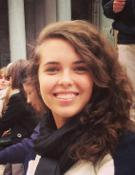
- + Name: Flora Tinoco Da Cunha Valle
- + Country: Brasil
- + Course: History of Art
My experience with the course History of Art in Rome:
"Eu sempre tive uma voluntade muito grande de aprender italiano e conhecer mais a cultura italiana. Parte do meu encanto com Roma è caminhar e a cada esquina me deparar com obras de arte e arquitetura . Estudar história da arte na escola foi o complemento ideal para fu poder aproveitar o que via, a aula me deu olhos para compreender o que está na minha frente todos os dias. Agora fu posso reconhecer os períodos da arte que se destacam na cidade e posso dizer que conheço Roma com outra intimidade"
The experience of Felipe Ochoa
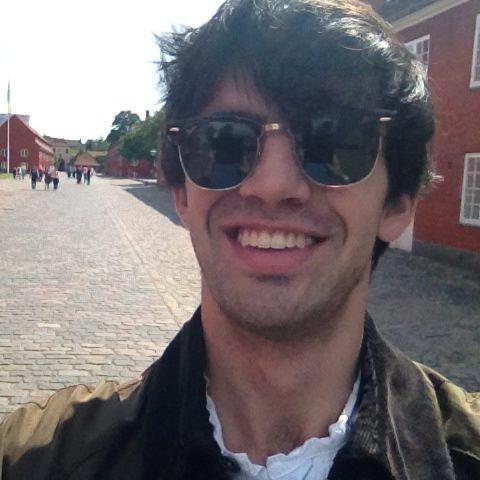
- + Name: Felipe Ochoa
- + Country: Ireland
- + Course: History of Art
My experience with the course History of Italian Art in Milan:
"The lessons of history of art have been fantastic. I learned about the architecture of the Greeks and Romans and paintings from Renaissance period to early 19th century. Now I can understand a little more about the Italian art and speak about the subject in Italian language”.
The experience of Alex Grasso
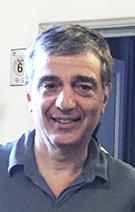
- + Name: Alex Grasso
- + Country: United States of America
- + Course: History of Italian Art
My experience with the History of Italian Art course at Scuola Leonardo da Vinci in Florence:
"I attended the Corso di Storia dell'Arte to learn more about museums in Florence. I knew that it would be in Italian, and I might have difficulty with it. However, Monica is fantastic; Her Italian is extremely clear, her enthusiasm is contagious. It is easy to see that she knows and loves the Art of Florence and the Renaissance. She explained the significant details, and also, taught us many of the fun trivial items. She was thoroughly prepared. She is the best. I highly recommend these courses for any student who wants to learn more about some of the major art institutions, and also some of the lesser touristy. I cannot wait to return to Florence and take more classes with Monica."
The experience of Lucy Vannata
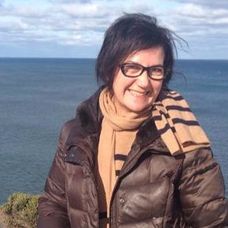
- + Name:Lucy Vannata
- + Country: Australia
- + Course: History of Italian Art
My experience with the course History of Italian Art at Scuola Leonardo da Vinci in Florence:
"I would like to highly recommend the art history tours organised by the Scuola Leonardo da Vinci. We were fortunate to have the well-versed and knowledgable, Monica lead us. The tours were conducted in Italian and relatively easy to understand as Monica pitched the information to our needs and level. What I loved most about the tours was her ability to make the characters and protagonists of the time 'come alive'! This was truly wonderful as we could visualise Michelangelo, Botticelli and other famous artists and sculptors working and contemplating their designs.
I also loved learning about the Medici family for example and the important role they played in Florence. We felt as if we got to know the characters as Monica was able to recount stories about them vividly and with endless energy and enthusiasm! Grazie Monica!!"

 English (UK)
English (UK)  Italian (IT)
Italian (IT)  French (FR)
French (FR)  Japanese (JA)
Japanese (JA)  German (DE)
German (DE)  Russian (RU)
Russian (RU)  Spagnolo (ES)
Spagnolo (ES)  Português (pt-PT)
Português (pt-PT)  Nederlands (nl-NL)
Nederlands (nl-NL)  Danish (DA)
Danish (DA)  Czech (CZ)
Czech (CZ)  Polacco (PL)
Polacco (PL)  Turkish (TR)
Turkish (TR)  Korean (KR)
Korean (KR)  Magyar
Magyar  Українська (Україна)
Українська (Україна)  简体中文(中国)
简体中文(中国) 


